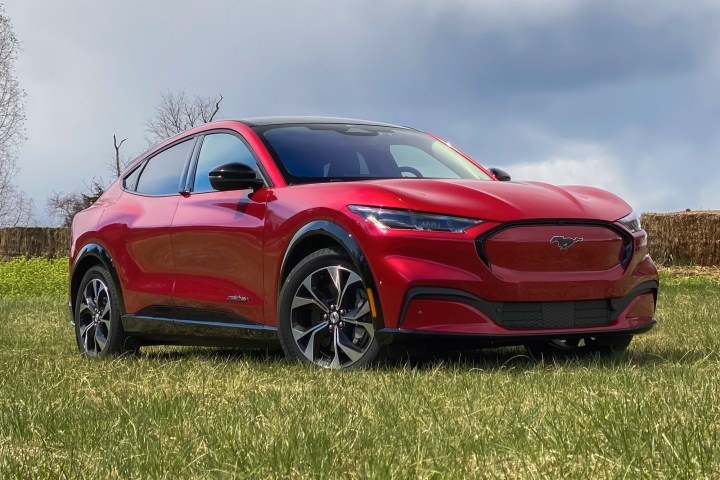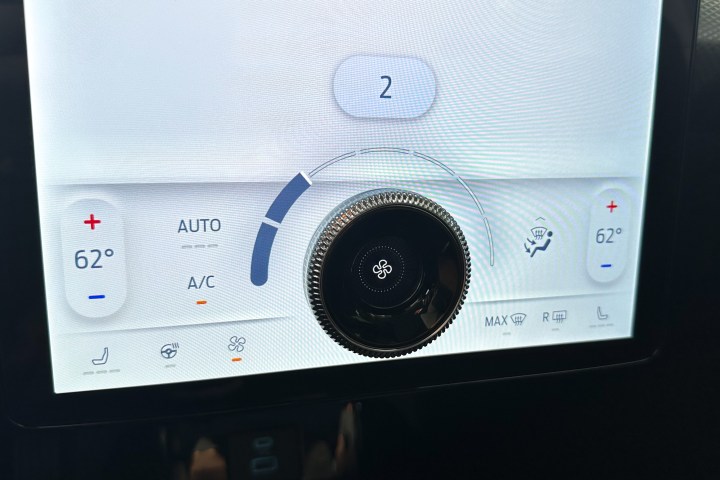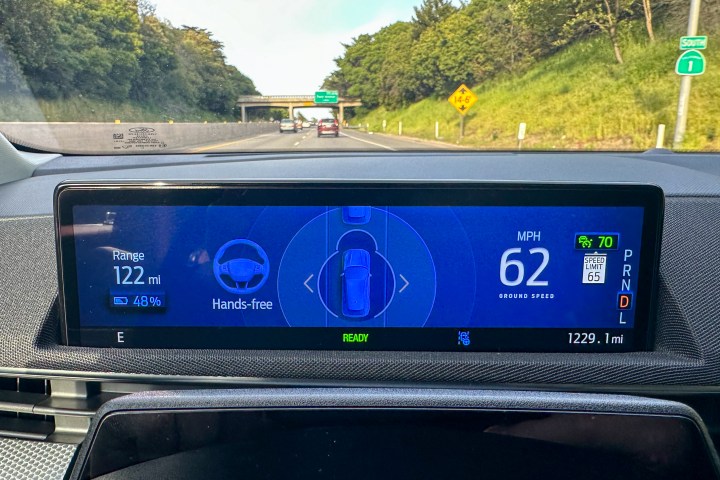
Ford and Tesla have both made headlines over the past few months for engaging in a relatively aggressive pricing battle. The Mach-E and the Tesla Model Y are among the most popular electric cars out there, and they’ve both gotten a fair bit cheaper in the last few months. The model Mach-E now sells for $42,995, and the base model Model Y goes for $47,490 — both before incentives.
I’ve reviewed a number of different Mach-E models over the past few years, and they’re always one of my favorite cars to drive. But after driving the Mustang Mach-E California Route 1 Edition for a week, it was apparent that the Mach-E isn’t just getting cheaper — it’s also getting better.
Here’s why.
Change is in the air
The updates to recent models of the Mach-E all boil down to one thing: over-the-air (OTA) updates. These are software updates that take place overnight and bring new features to your car without you having to bring it into the shop.
My personal favorite is a relatively small update — but it makes a huge difference. The Mach-E has a big circular dial in the middle of its infotainment screen which, to date, only served as a way to control volume. But with a small update, Ford made it so that this dial could also control the temperature and fan speed of the climate system in the car.

This sounds minor, and in the grand scheme of things, it is. But I’ve long hated digital climate controls, and in the Mach-E, this update at least partially solves that problem. Not completely, mind you — you still have to tap a button on the screen before turning the dial. But at least you don’t have to mess around with sliders on the screen like you used to.
Another big software update comes in the form of updates to BlueCruise, which currently allows your car to drive you on the highway, hands-free. You’ll still need to pay attention — and I did find myself having to nudge the steering wheel every now and then. But it works quite well and doesn’t buzz at you for taking your hands off the wheel.
Now, to be fair, BlueCruise 1.2 isn’t quite available to older Mach-E models as a software update yet. Instead, it’s available on all new Mach-Es rolling off the factory line. But Ford says it will roll out to older Mach-Es in the future.
All this is to say that Ford may actually be taking advantage of what software updates can provide. To be clear, the improvements made so far are relatively minor — but they still exist, and in a world where just a few short years ago it would have been unthinkable for a Ford to get life-improving updates.

Hardware updates are coming
Not everything comes down to software updates though — despite lowering the price of the Mach-E, Ford is clearly also investing in improving the hardware of the car.
Case in point? Later this year, Ford will switch out the type of battery in the Mach-E, for a new kind of battery called Lithium Iron Phosphate, or LFP. This only applies to the standard-range models of the Mach-E, but it’ll bring a few more miles of range, with the rear-wheel drive models going from 247 miles to 250 miles, and the all-wheel drive from 224 to 226.
Of course, those numbers represent minuscule improvements. The real advantages come in the form of a 45 horsepower boost and the ability to charge at a faster rate — taking five minutes less on a DC fast charger. The car will also be able to charge to full more often on a slower home charger, allowing drivers to take full advantage of the range on offer.
Improvements to hardware are, of course, less unexpected than those to software. Carmakers are used to refining their cars on a yearly basis, only radically redesigning them every five years or so. That, of course, means that the Mach-E may be headed for a redesign in just a few short years.
We will, however, have to wait and see if that actually happens, and how the Mach-E is selling up against what I hope is far-increased competition. One thing that could give Ford the leg-up, however, is continued refinements of its software, and improvements to its hardware.


